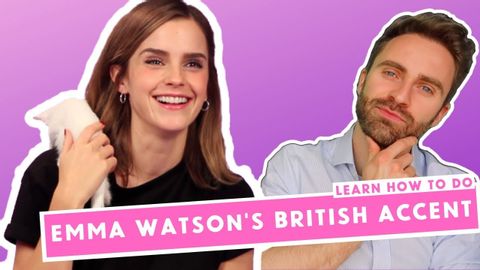
Subtitles & vocabulary
Learn Emma Watson's British Accent (HERMIONE) | Received Pronunciation
00
Summer posted on 2020/04/28Save
Video vocabulary
articulate
US /ɑ:rˈtɪkjuleɪt/
・
UK /ɑ:ˈtɪkjuleɪt/
- Transitive Verb
- To express something clearly using language
- Adjective
- Having or showing the ability to speak fluently and coherently.
B2TOEIC
More pronunciation
US /prəˌnʌnsiˈeʃən/
・
UK /prəˌnʌnsiˈeɪʃn/
- Noun (Countable/Uncountable)
- How a word is said; how a word sounds
- The manner in which someone utters a word.
B1
More extremely
US /ɪk'strimlɪ/
・
UK /ɪkˈstri:mli/
- Adverb
- In a way that is much more than usual or expected
- Remarkably; unusually.
B1
More accent
US /ˈækˌsɛnt/
・
UK /'æksent/
- Transitive Verb
- To give emphasis to (a point you are making)
- Noun
- Feature of a design, e.g. a stripe on a shirt
- Correct spoken emphasis on a part of a word
A2
More Use Energy
Unlock All Vocabulary
Unlock pronunciation, explanations, and filters
